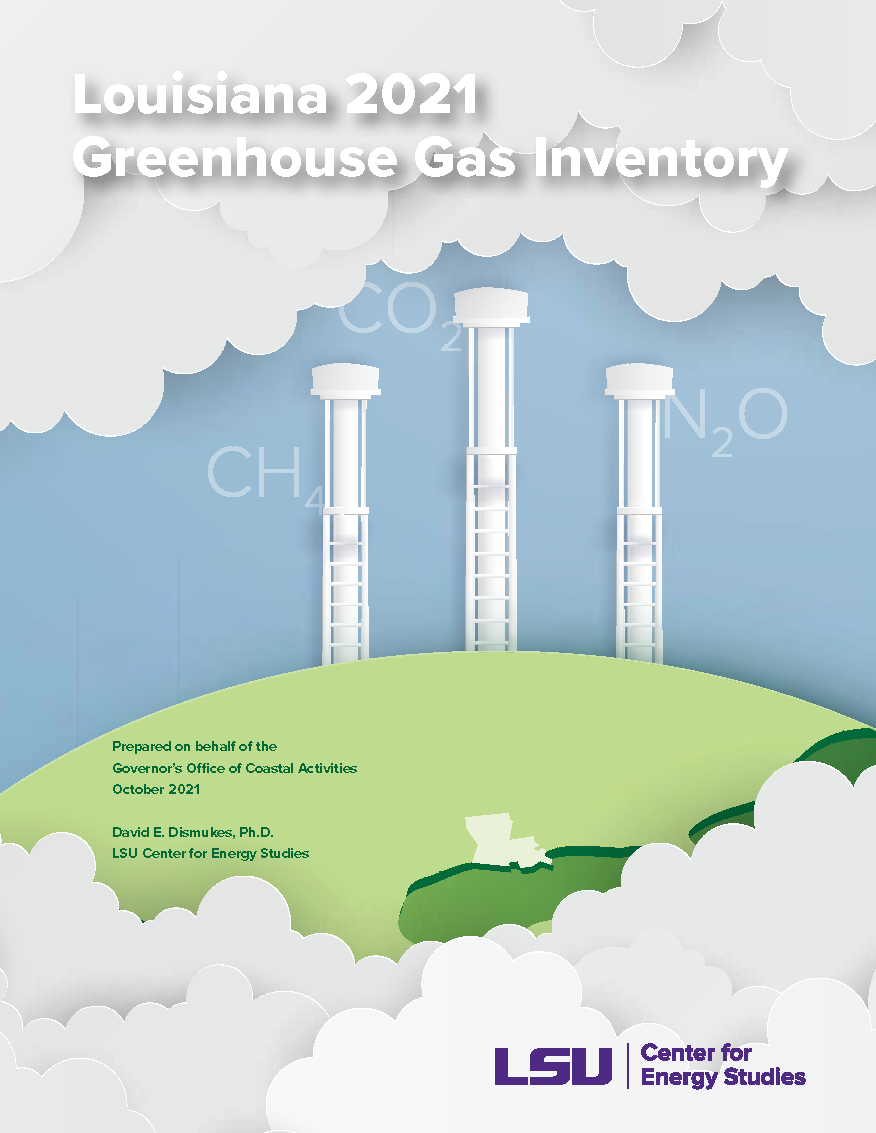Louisiana 2021 GHG Inventory
Prepared on behalf of the Governor’s Office of Coastal Activities
David E. Dismukes, Ph.D., LSU Center for Energy Studies
In February 2020, Governor John Bel Edwards announced the creation of a Climate Initiatives Task Force (CTF) to consider the important implications that climate change and greenhouse gas (GHG) emissions have for the Louisiana economy and environment. A key data tool needed by the task force is an update of the Louisiana GHG inventory, which had been conducted by the Louisiana State University Center for Energy Studies (CES) in years past (1997, 2010). In January 2021, the Governor’s Office of Coastal Activities contracted with CES to estimate and assess Louisiana GHG emissions from all major sources, activity types, and pollutant types.
The GHG inventory surveys and estimates GHG emissions by activity type and economic sector. The inventory can be thought of as a “cross-sectional” analysis, or snapshot, in time that identifies where each major Louisiana economic sector stands in terms of its GHG emissions. The GHG inventory estimation process can also be thought of as a “tops-down” analysis, as it estimates emissions across broad economic sectors and activities. Over the course of this investigation, CES has worked with the governor’s office, other stakeholders, and the CTF’s Scientific Advisory Group to identify and estimate carbon emission sources and sinks in Louisiana. This analysis not only estimates GHG emissions, by activity type, economic sector, and GHG pollutant type, but also estimates all three across a broad time period, 2000-2018.
Major Findings
- Louisiana has a relatively high level of greenhouse gas emissions for its population size and GDP. The state’s share of total U.S. GHG emissions has hovered around 4.1 percent to 4.2 percent (1990-2018).
- U.S. and Louisiana total GHG emissions that arise from the combustion of fossil fuels have been decreasing since 2000.
- The trend in GHG emissions from the residential and commercial sectors of the Louisiana economy has been relatively consistent since 2000, with the combustion of fossil fuels as the main source.
- Louisiana’s transport-related GHG emission trends have decreased since 2000, likely due to increased vehicle fuel efficiencies, as well as an increase in alternative-fueled vehicles.
- Louisiana’s industrial GHG emissions have steadily increased since 2000, due to the expansion of industrial activity in the state during the past few years.
- The GHG emission trends from Louisiana’s power generation have seen the most improvement of any sector, particularly after 2010.
- Land use, particularly increasing forest area, can serve as a “sink” for sequestering Louisiana’s carbon emissions. Louisiana’s large forested lands, particularly in the northern part of the state, provide considerable negative emission resources.
- CO2 and methane (CH4) are the two largest pollutants produced by the oil and gas industry. Methane-related emissions have decreased as a result of decreased activity in that sector.
- Over 92 percent of all Louisiana GHG emissions (as of 2018) are CO2, with methane accounting for 4.3 percent, and N2O accounting for 2.13 percent.
- While U.S. GHG emissions are heavily concentrated in power generation and transportation, Louisiana’s are highly concentrated in industry; therefore, decarbonization must be the predominate focus of attention for Louisiana policy makers in meeting the state’s future GHG emission goals.